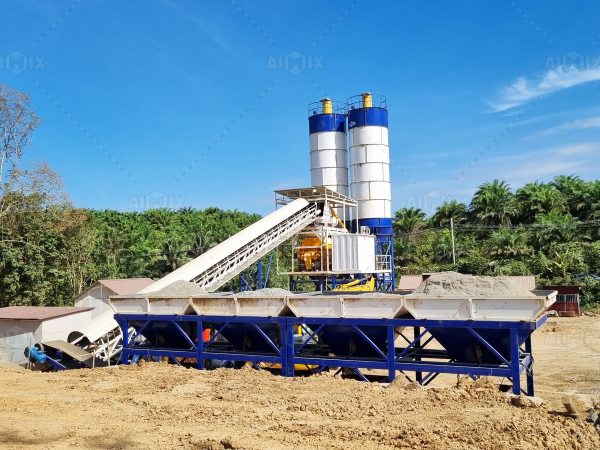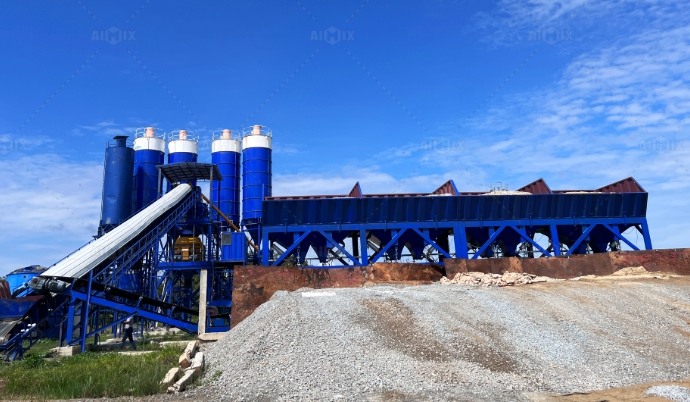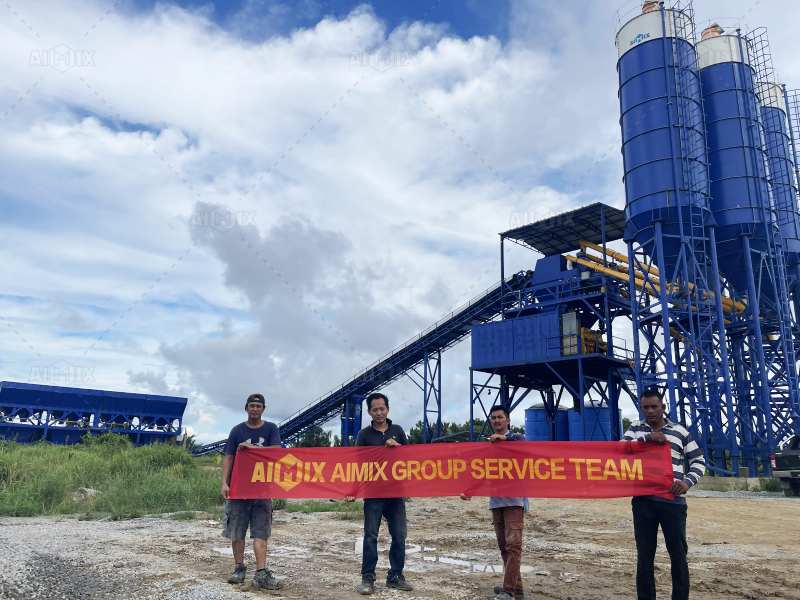In the construction industry, sustainability has become a pressing priority. As demand for concrete continues to grow, so does the need for environmentally friendly production methods. Stationary concrete batching plants offer a viable solution for reducing waste and energy consumption, thereby aligning production practices with sustainability goals. This article explores how these stationary concrete batching plants contribute to more efficient operations and greener construction processes.
The Role of Stationary Concrete Batching Plants in Sustainable Construction
Stationary concrete batching plants are fixed installations designed for large-scale and long-term concrete production. Unlike mobile batch plants, which are optimized for flexibility, stationary plants emphasize consistency and efficiency. These characteristics make them particularly suited for minimizing waste and optimizing energy use.

Key Features That Reduce Waste
- Precise Measurement and Mixing Stationary concrete batching plants are equipped with advanced sensors and automated systems that ensure precise measurement of raw materials, including cement, aggregates, water, and additives. Accurate batching minimizes the risk of over-mixing or under-mixing, reducing material wastage and ensuring consistent product quality.
- Automated Control Systems Automation plays a significant role in waste reduction. Modern stationary plants feature computerized control systems that monitor and adjust mixing parameters in real-time. This ensures that each batch adheres to exact specifications, reducing the likelihood of rejected batches.
- Recycling Systems Many stationary plants incorporate recycling mechanisms to handle leftover concrete and wastewater. Unused concrete can be reprocessed into aggregates or other construction materials, while wastewater is treated and reused for mixing or cleaning purposes.
- Bulk Material Handling Stationary batching plants often include silos and conveyors for bulk storage and transport of raw materials. This reduces spillage and contamination, further minimizing waste.
Energy Efficiency in Stationary Concrete Batching Plants
- Energy-Efficient Equipment Modern stationary batching plants are equipped with energy-efficient motors, mixers, and conveyors. These components are designed to consume less power while maintaining high performance, significantly reducing overall energy usage.
- Renewable Energy Integration Some stationary plants are equipped with renewable energy systems such as solar panels or wind turbines. These installations supplement energy needs, reducing reliance on non-renewable sources and lowering carbon footprints.
- Heat Recovery Systems Advanced plants often incorporate heat recovery systems that capture and reuse heat generated during production processes. This reduces energy consumption for temperature control and other auxiliary operations.
- Optimized Logistics Stationary plants’ centralized locations help streamline logistics, minimizing the energy expended on transporting raw materials and finished concrete. Fewer trips translate to lower fuel consumption and reduced emissions.

Real-World Applications of Sustainable Stationary Batching Plants
- Urban Infrastructure Projects In cities like Dubai and Singapore, where large-scale urban infrastructure projects are common, stationary batching plants are deployed to supply consistent, high-quality concrete. These plants integrate recycling and energy-efficient technologies to align with the cities’ sustainability goals.
- Precast Concrete Manufacturing Precast concrete production requires precise and consistent mixes, making stationary plants ideal for the task. The waste recycling features ensure that leftover materials are reprocessed, reducing environmental impact.
- Green Building Initiatives Construction companies participating in green building certification programs, such as LEED or BREEAM, use stationary batching plants to meet stringent sustainability standards. Energy-efficient operations and waste reduction measures contribute to earning these certifications.
Tips for Maximizing Sustainability with Stationary Batching Plants
- Invest in Advanced Technology Choose batching plants with the latest automation and energy-saving features. These systems not only reduce waste but also improve productivity and operational efficiency.
- Regular Maintenance Proper maintenance ensures that equipment operates at peak efficiency, minimizing energy wastage and prolonging the plant’s lifespan.
- Employee Training Train operators to use the plant’s systems effectively. Well-trained personnel are more likely to optimize processes and avoid errors that could lead to waste.
- Monitor and Optimize Energy Usage Implement energy monitoring systems to track consumption and identify areas for improvement. Regular audits can help ensure that the plant operates as efficiently as possible.
- Incorporate Renewable Energy Sources Where feasible, integrate renewable energy systems such as solar or wind power to offset energy consumption and reduce greenhouse gas emissions.

Challenges and Future Trends
While stationary concrete batch plants for sale offer numerous sustainability benefits, challenges remain. Initial investment costs for advanced technologies and renewable energy integration can be high. Additionally, not all regions have access to recycling infrastructure or renewable energy resources.
Looking ahead, emerging technologies such as artificial intelligence and machine learning could further optimize plant operations, reducing waste and energy consumption even further. Innovations in material science, such as carbon capture in cement production, are also expected to enhance sustainability in the concrete industry.
Conclusion
Stationary concrete batching plants are instrumental in reducing waste and energy consumption in concrete production. Through precise measurement, advanced automation, recycling capabilities, and energy-efficient systems, these plants contribute to greener construction practices. By investing in modern technologies and adopting best practices, companies can align their operations with sustainability goals, reducing environmental impact while maintaining profitability. As the industry continues to evolve, stationary batching plants will remain a cornerstone of sustainable construction.